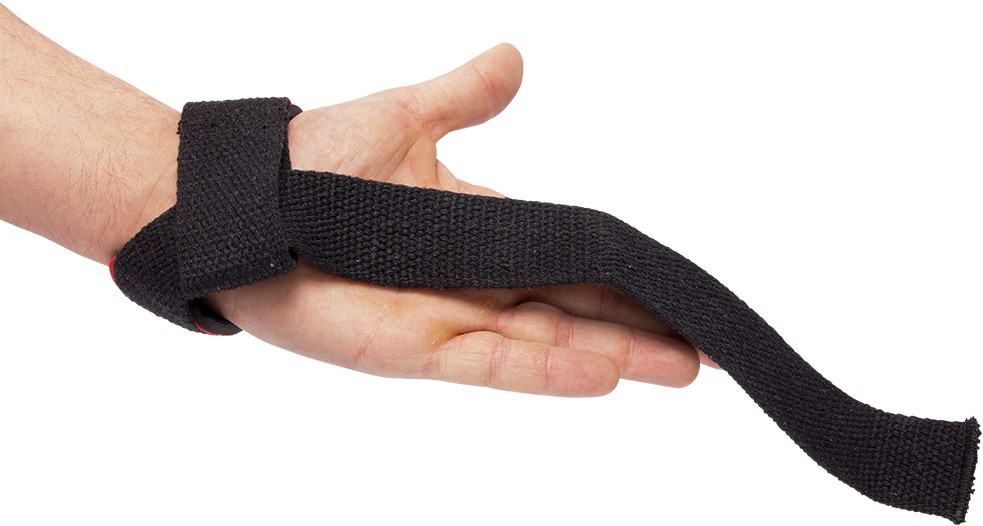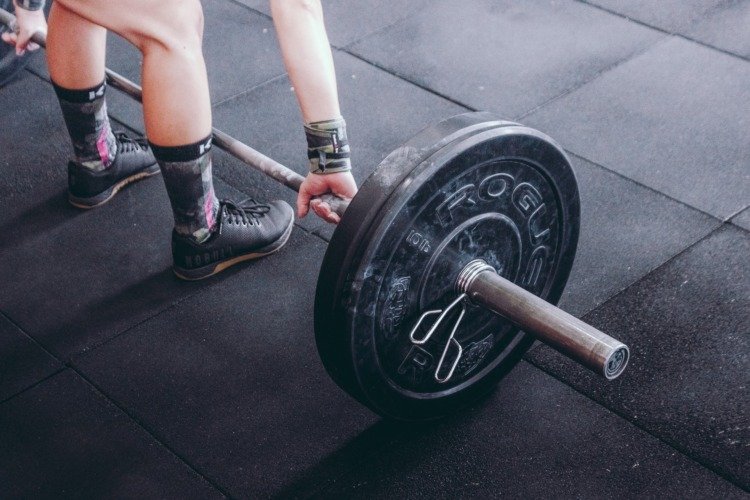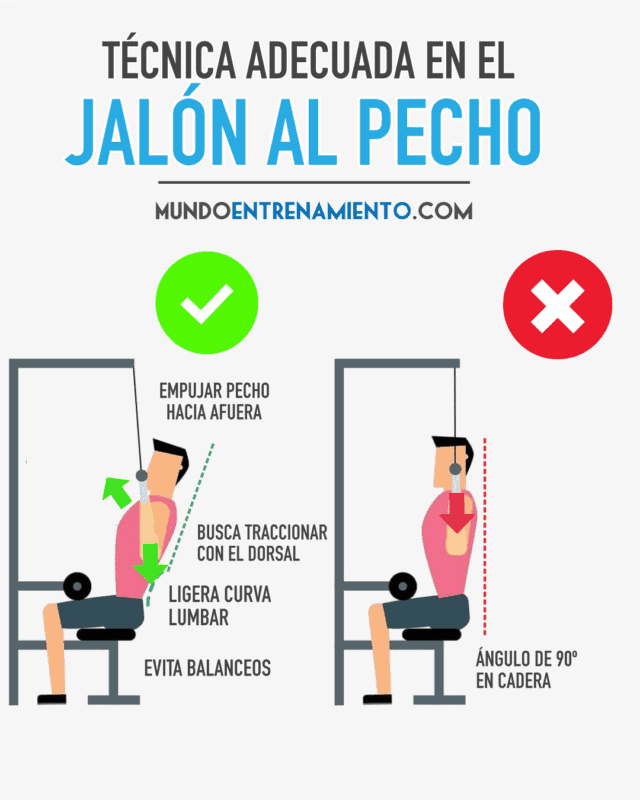The following article aims to analyze what science says about straps or lifting straps.
It is common to see many people in fitness rooms using this type of accessory during their training, but what does science say about it?
What are ‘straps‘?
A ‘strap‘ is a strap made of nylon, linen, or cotton that is placed on the wrists and wrapped around the bar during an exercise performed with a barbell. These straps usually have a length of between 30 and 45 centimeters.
Lifting straps are a type of ergogenic aid, meaning they are an external element that we use with the aim of obtaining some type of benefit (3).
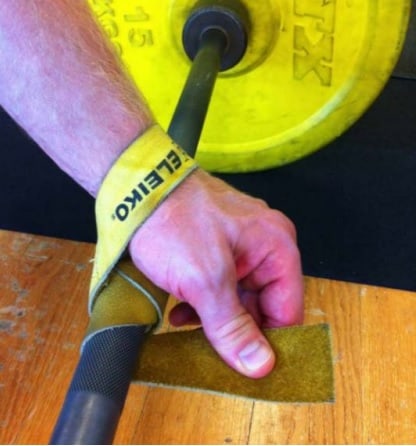
Among the athletes who use this type of accessory are powerlifters, strongmen, or weightlifters as they perform very heavy lifts.
What are ‘straps‘ used for?
Using this type of strap in lifts has the following benefits (1,2):
- Transfer part of the weight from the fingers to the wrists.
- Allows the person performing the lift to focus on the execution of the movement and not on the grip.
- Help the athlete hold/grip the bar especially under very high loads or high training volumes.
- The muscles involved in the grip are sometimes a limiting factor of the exercise, meaning they fatigue early and force the exercise to be interrupted, when in reality the person could do more repetitions. By using ‘straps‘ the involvement of this musculature is minimized.
These benefits suggest that using this accessory leads to lifting with more weight and/or at a higher speed. Let’s see what the scientific evidence says about it.
What does science say about the benefits of ‘straps‘?
Although there are not many scientific studies that have investigated the supposed benefits of ‘straps‘, we find some studies on lifting straps in these exercises:
- Deadlift
- Lat pulldown
- Pull-ups
Use in deadlift
VS Coswing et al. (2015) compared the 1RM and the maximum number of repetitions at 90% 1RM performed with and without straps (3).
The test to analyze the maximum number of repetitions was performed at 90% of the 1RM with a closed pronated grip, performing 3 sets with 2 minutes of rest between them.
The results obtained from this study were:
- The participants lifted more weight in the 1RM test with straps (180 kg on average compared to 151 kg).
- No significant differences were found in the number of repetitions performed with or without the lifting straps.
- In the last of the series, the power (W) was significantly higher with ‘straps’.
- The peak force and average force were higher with ‘straps’.
- The participants perceived 45% more fatigue in the forearms when performing the series without ‘straps‘, measured through the RPE scale.
Jukic I. et al. (2020) also found benefits of using straps in their study where participants had to perform 4 sets of 4 repetitions at 80% 1RM (5).
On this occasion, the authors concluded that using the straps improves mechanical performance (speed, power, etc.), the perceived effort was lower and it facilitates the recovery of grip strength after performing the exercise using the straps compared to without them.
On the negative side of using straps in the deadlift, we find a study that showed a higher incidence of injuries in powerlifters who used straps compared to those who did not.
Strömbäck, E. et al (2018) surveyed 104 sub-elite Swedish powerlifters about their injury history (6).
Results were obtained that no other study had previously reflected. The athletes who frequently used ‘straps’ reported a higher number of injuries in the knee and thoracic region.
The authors speculated that this could be because the straps create greater difficulty in achieving a correct start.
Another interpretation they made was that perhaps powerlifters with a previous injury in the knee or chest used the straps, among other reasons, to relieve load in these areas.
Regarding knee injuries, the authors also suggested that when performing a mixed grip without straps, the arm of the hand that is in supination tends to push the thigh/knee, potentially causing a valgus in the knee, one of the most common mechanisms in knee injuries.
The use of lifting straps can prevent or reduce these mechanisms.
Injuries have a multifactorial nature, so a direct relationship cannot be established between the use of ‘straps’ and injury risk. Future research should determine if using this accessory in training is a factor that increases injury risk.
Use in lat pulldown
The use of straps is mostly done in movements with training bars. However, some researchers studied the influence of straps in the lat pulldown.
DF Valerio et al. (2019) analyzed whether using straps has effects on maximum strength, number of repetitions, and muscle activation in the lat pulldown exercise.
A test of maximum strength (1RM) was carried out and another to check the number of repetitions in 3 sets at 70% of the 1RM with 1 minute of rest between sets.
The results showed that performing the lat pulldown with ‘straps‘ or lifting straps had no benefit regarding maximum strength (1RM), number of repetitions, or muscle activation compared to performing it without the straps.
The authors suggested that the effects of using this accessory are more clearly seen in movements that allow heavier lifts, such as the deadlift, and in heavier lifts than those analyzed in this study (intensity of 70% 1RM).
Use in pull-ups
L Bašić (2019) studied whether performing pull-ups with ‘straps‘ leads to more repetitions than without this material.
The results showed that using this type of strap did increase the number of repetitions performed to muscle failure by 17%.
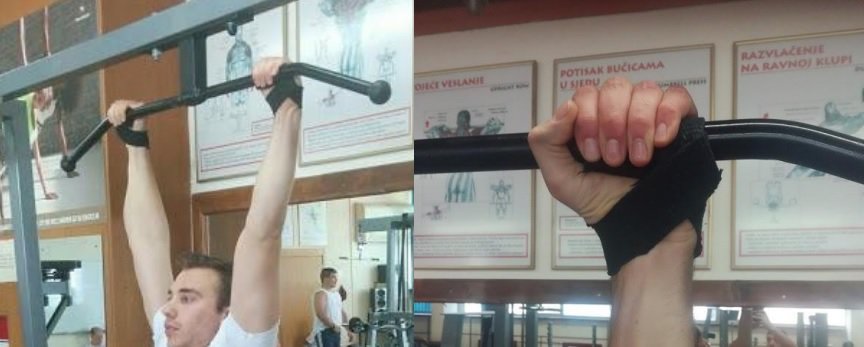
Thus, a increase in total work and time under tension was certified, fundamental factors in increasing strength and hypertrophy.
When is it recommended to use ‘straps’?
As we have seen in the conclusions of scientific studies, using straps has some benefits in certain circumstances.
One of them is that it minimizes the involvement of the forearm muscles, which is a limiting factor in many heavy lifts.
However, if we always use ‘straps‘ to perform the deadlift, the muscles involved in gripping the bar are never stimulated, and there will be no improvement in them, perpetuating the use of ‘straps‘.
Furthermore, scientific evidence has only demonstrated benefits in their use when the lift is heavy, so using the straps when the loads do not exceed 70% of the 1RM does not provide more benefit than performing it without them.
Therefore, their use is recommended occasionally to take advantage of all their benefits at certain times of the season, avoiding creating maladaptations in grip strength.
MÁS FUERZA Y MÁS RENDIMIENTO: con las correas de elevación FITGRIFF obtienes un producto de marca confiable para el entrenamiento con pesas. La ayuda de tracción proporciona un apoyo de primera clase y alivia sus antebrazos durante los levantamientos pesados. Indispensable para peso muerto, pull-ups, remo pesado o pull-downs, etc.
Conclusions
Some of the benefits assumed from the use of ‘straps‘ or lifting straps have been verified by science in certain exercises and intensities.
In deadlift, it has been shown that using straps allows lifting more load in heavy lifts (90% 1RM), but not lifting it more times. Also, the perceived effort was lower lifting with ‘straps‘ than without them.
Using straps does not increase the maximum load lifted in the lat pulldown nor does it increase the number of repetitions done at 70% 1RM with ‘straps’.
Doing pull-ups with ‘straps‘ or lifting straps allows performing a greater number of repetitions.
Their use is recommended occasionally
More research is needed to investigate the benefits of lifting straps in other exercises and at different intensities to reach more rigorous conclusions.
